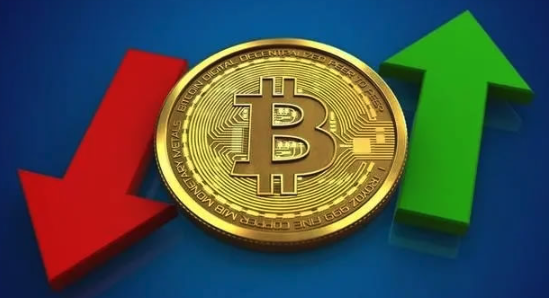Bitcoin and Cryptocurrency Forecasts in the Next Five Years (2025-2030)
Jul 11, 2025 pm 09:09 PMLooking ahead to the next five years, the Bitcoin and cryptocurrency sectors are at a critical crossroads. This article will explore in-depth several core trends that may dominate the market from 2025 to 2030, including the evolution of the regulatory environment, breakthrough technology progress, and changes in its role in the global macroeconomic, and draw a clear picture of the future for readers.
1. Deepening and mainstreaming of the institutionalization process
In the next five years, large financial institutions and multinational corporations will no longer be bystanders in the crypto field, but important players. This trend will be reflected in the following aspects:
- Regularization of asset allocation: Following the approval of Bitcoin spot ETFs, more compliant investment products will emerge, allowing institutional and individual investors to more easily include crypto assets in their investment portfolios. It is expected that sovereign wealth funds and large pension funds will also begin to allocate small scale.
- New customers on corporate balance sheets: More tech companies and forward-looking businesses may follow early adopters and use Bitcoin as a strategic reserve asset to hedge the risk of fiat currency depreciation.
2. Official website and APP of mainstream trading platforms around the world
- Binance Binance: ()
- Ouyi OKX: ()
- Huobi: ()
- Gate.io Sesame Opening: ( )
3. Clarification and maturation of global regulatory frameworks
Regulatory uncertainty has been one of the biggest obstacles to the market. By 2030, major global economies are expected to form a relatively clear and coordinated regulatory framework.
- From "gray zone" to "having laws to follow": Countries will issue clear laws and regulations covering market access, investor protection, taxation, and anti-money laundering (AML). This will bring legitimacy to the industry, but also increase compliance costs.
- Regulatory models of different paths: The United States may continue its securities law-based regulatory path, while the EU's MiCA (Crypto Asset Market Regulation) will be fully implemented to provide templates for other regions. The interaction and game between different regulatory models will be the highlight.
4. Technology iteration: a breakthrough in layer 2 network and scalability
To support larger-scale applications, the evolution of underlying technologies is crucial. Bitcoin’s scalability problem will be significantly alleviated through the Layer 2 solution.
- Popularization of Lightning Network: Bitcoin’s Lightning Network will become more mature and user-friendly, supporting small- and high-frequency instant payments, greatly enhancing its usability in daily consumption scenarios.
- Upgrade of the underlying protocol: The Bitcoin core protocol itself will also continue to undergo prudent soft fork upgrades to enhance its functionality, privacy and security, such as further optimization after upgrading through Taproot.
5. The integration of DeFi and traditional finance (TradFi)
The innovative concept of decentralized finance (DeFi) will be partially absorbed and learned from the traditional financial system to form a "mixed finance" model.
- Asset Tokenization (RWA): Tokenization of real-world assets such as real world assets (Real World Assets) will become an important trend. This allows traditional assets to be efficient and transparently transferred and traded on the blockchain.
- Compliant DeFi services: Traditional financial giants may launch their own, regulatory-compliant decentralized lending or trading platforms, combining DeFi's high efficiency with their own compliance capabilities and customer base.
6. Evolution of store of value in macroeconomic environment
Bitcoin’s positioning as “digital gold” will continue to be tested and strengthened by the global macroeconomic environment in the next five years.
- Inflation hedging tools: Against the backdrop of increased uncertainty in monetary policy of global central banks and continued inflationary pressure, Bitcoin's fixed total and decentralized characteristics make its attractiveness as a store of value and inflation hedging tool may further increase.
- Geopolitics safe haven: As geopolitical tensions intensify, capital may seek safe-haven assets beyond the control of sovereign states, and Bitcoin’s performance in this role will attract much attention.
Summary and prospect
From 2025 to 2030, the cryptocurrency field will undergo a key transformation from wild growth to standardization and mainstreaming. Its core driving force is no longer just speculation, but technical practicality, institutional adoption and regulatory clarity. The market will become more mature in the future, and volatility may decrease, and its connection with traditional financial systems will become increasingly close.
For followers, understanding these macro trends is more important than chasing short-term price volatility. The focus will shift from "what it is" to "what it can do", and the implementation of technology and practical application will be the key to determining success or failure in the next five years.
The above is the detailed content of Bitcoin and Cryptocurrency Forecasts in the Next Five Years (2025-2030). For more information, please follow other related articles on the PHP Chinese website!

Hot AI Tools

Undress AI Tool
Undress images for free

Undresser.AI Undress
AI-powered app for creating realistic nude photos

AI Clothes Remover
Online AI tool for removing clothes from photos.

ArtGPT
AI image generator for creative art from text prompts.

Stock Market GPT
AI powered investment research for smarter decisions

Hot Article

Hot Tools

Notepad++7.3.1
Easy-to-use and free code editor

SublimeText3 Chinese version
Chinese version, very easy to use

Zend Studio 13.0.1
Powerful PHP integrated development environment

Dreamweaver CS6
Visual web development tools

SublimeText3 Mac version
God-level code editing software (SublimeText3)
 How to change the default opening method of PDF files in Windows 10_How to modify the default opening method of Windows 10 PDF
Oct 11, 2025 am 11:00 AM
How to change the default opening method of PDF files in Windows 10_How to modify the default opening method of Windows 10 PDF
Oct 11, 2025 am 11:00 AM
There are three ways to change the default PDF opening method to your desired application: through File Explorer, System Settings, or Control Panel. First, you can right-click on any PDF file and select "Open with" and check "Always use this app"; secondly, enter the "Default Application" setting through [Win I] and specify a program for .pdf; you can also manually associate it through the "Default Program" function of the control panel. If it is still changed after setting it, you need to check whether the security software has reset the association, and make sure that the PDF reader's own settings have been set to default to avoid conflicts between multiple PDF software and lead to unstable association.
 What should I do if the voice input function cannot be used in win11_How to fix the voice input function in win11 cannot be used
Oct 10, 2025 am 11:51 AM
What should I do if the voice input function cannot be used in win11_How to fix the voice input function in win11 cannot be used
Oct 10, 2025 am 11:51 AM
First, check the microphone connection and settings to ensure that the device is recognized by the system; secondly, enable microphone access in the privacy settings and allow the application to use it; then confirm that the language and regional settings are correct, and configure the matching speech recognition language; then run the audio troubleshooting tool to automatically fix the problem; finally update or reinstall the audio driver to troubleshoot the driver failure.
 How to use windows10 right-click menu management tool_windows10 right-click menu management tutorial
Oct 11, 2025 am 11:06 AM
How to use windows10 right-click menu management tool_windows10 right-click menu management tutorial
Oct 11, 2025 am 11:06 AM
Windows 10 right-click menu can be managed through third-party tools, registry editing, or command line. Firstly, it is recommended to use visual tools such as "Windows Right-click Menu Management Assistant" to add or delete menu items after running as an administrator; secondly, you can manually edit the registry, create a new shell item under the relevant path of HKEY_CLASSES_ROOT and set the command subkey to point to the target program. You need to back up the registry before operation; finally, you can use the open source tool ContextMenuManager to batch manage menu items through command line list, disable, enable and other parameters, which is suitable for advanced users.
 What should I do if the right-click menu on the Windows 8 desktop is stuck?_How to fix the stuck right-click menu on the Windows 8 desktop
Oct 11, 2025 am 10:42 AM
What should I do if the right-click menu on the Windows 8 desktop is stuck?_How to fix the stuck right-click menu on the Windows 8 desktop
Oct 11, 2025 am 10:42 AM
The right-click menu is stuck due to registry redundancy or software conflicts. It is necessary to clean up the ContextMenuHandlers items, delete non-New sub-items, use the search function to check the Directory path and delete redundant items, uninstall third-party software such as 360 or NVIDIA, and update the graphics card Bluetooth driver to solve the problem.
 How to set the taskbar clock to the second in win11_How to set the seconds displayed in the win11 taskbar clock
Oct 14, 2025 am 11:21 AM
How to set the taskbar clock to the second in win11_How to set the seconds displayed in the win11 taskbar clock
Oct 14, 2025 am 11:21 AM
Windows 11 can enable the taskbar clock to display seconds through settings, registry, command line, or third-party tools. 1. Turn it on in settings: Go to Personalization → Taskbar → Taskbar Behavior and turn on "Show seconds in system tray clock"; 2. Registry modification: Create a new DWORD value ShowSecondsInSystemClock under HKEY_CURRENT_USER\SOFTWARE\Microsoft\Windows\CurrentVersion\Explorer\Advanced and set it to 1; 3. Command line execution: Run PowerShell as an administrator and enter regaddHKCU\Softw
 What to do if win10 folder cannot be renamed_win10 file rename failure solution
Oct 10, 2025 pm 12:24 PM
What to do if win10 folder cannot be renamed_win10 file rename failure solution
Oct 10, 2025 pm 12:24 PM
Folders that cannot be renamed may be due to being occupied, insufficient permissions, or system settings issues; 02. You can end the occupying process through Task Manager and Resource Monitor; 03. Run File Explorer as an administrator to increase permissions; 04. Reset folder options to fix interface failures; 05. Check and repair the user folder path in the registry; 06. Use tools such as IObitUnlocker to force unlock.
 What should I do if the right-click management of 'This PC' cannot be opened in win10_How to fix the problem that the right-click management of win10 cannot be opened
Oct 10, 2025 pm 12:15 PM
What should I do if the right-click management of 'This PC' cannot be opened in win10_How to fix the problem that the right-click management of win10 cannot be opened
Oct 10, 2025 pm 12:15 PM
First, check whether the function is normal by running compmgmt.msc. If abnormal, repair the system files (sfc/scannow and DISM), correct the registry call path and configure permissions. Finally, create a desktop shortcut as an alternative.
 How to check the space occupied by system restore points in Windows How to check the space occupied by Windows system restore points
Oct 11, 2025 am 10:36 AM
How to check the space occupied by system restore points in Windows How to check the space occupied by Windows system restore points
Oct 11, 2025 am 10:36 AM
First, check the space occupied by the C drive restore point through the System Protection tab in the system properties. Secondly, use the PowerShell command vssadminlistshadowstorage to obtain the total volume shadow copy occupation. Finally, check the SystemRestore task frequency through the Task Scheduler to evaluate the storage impact.





